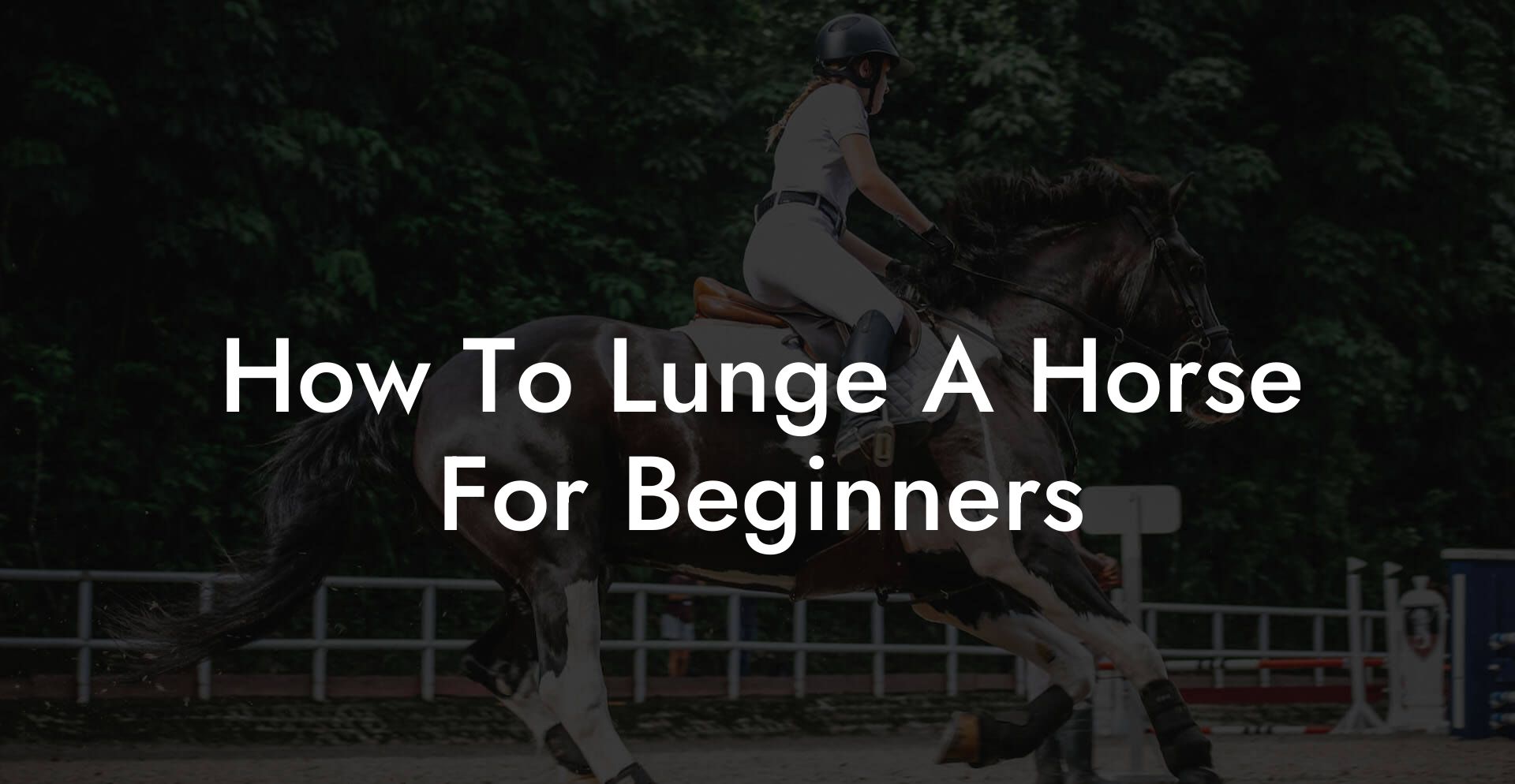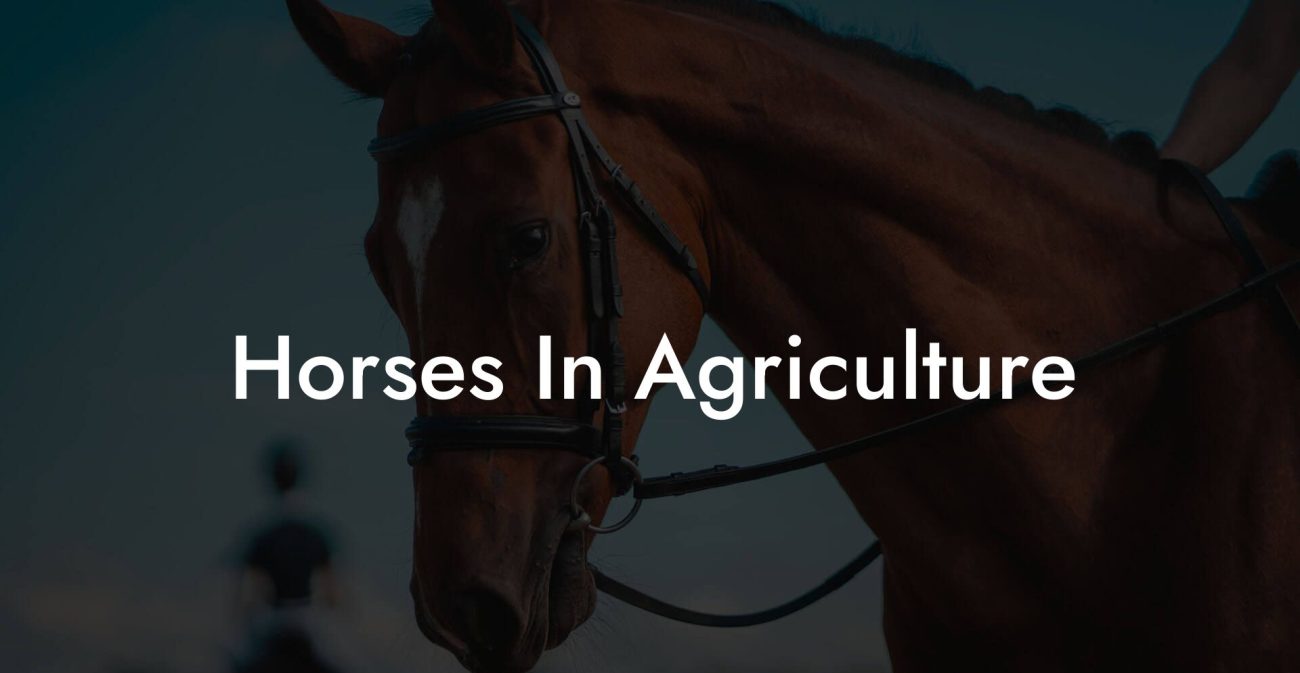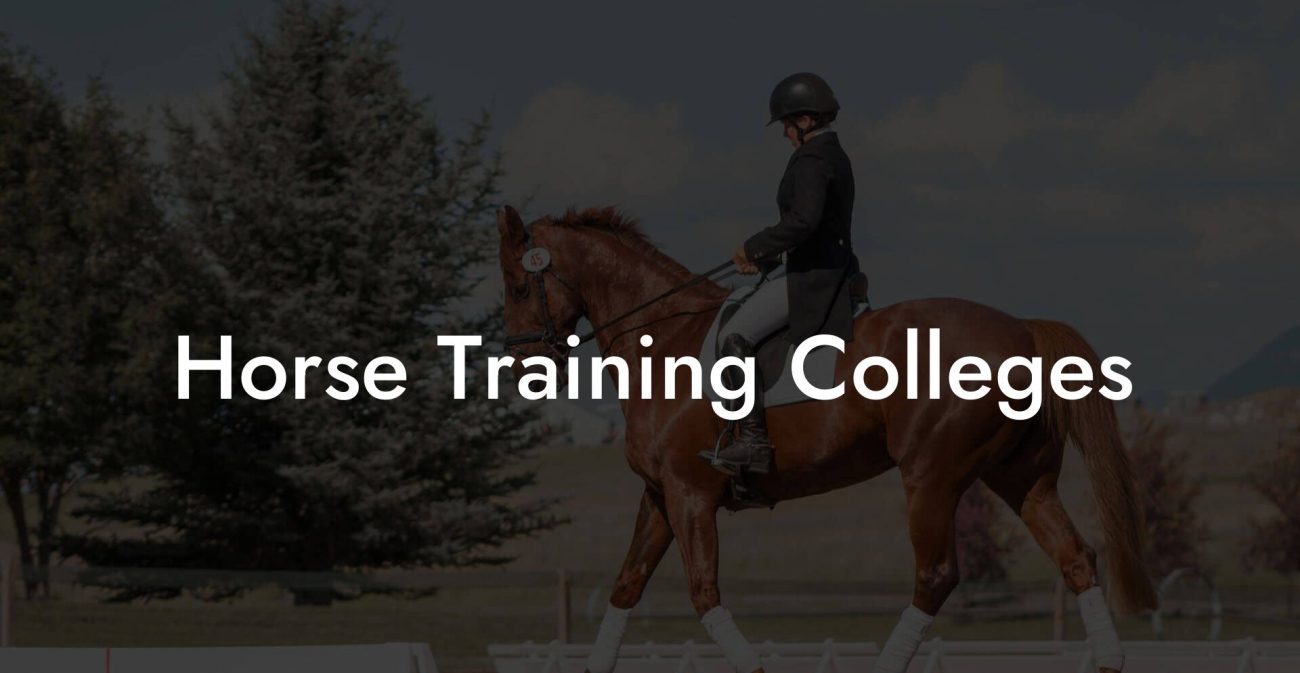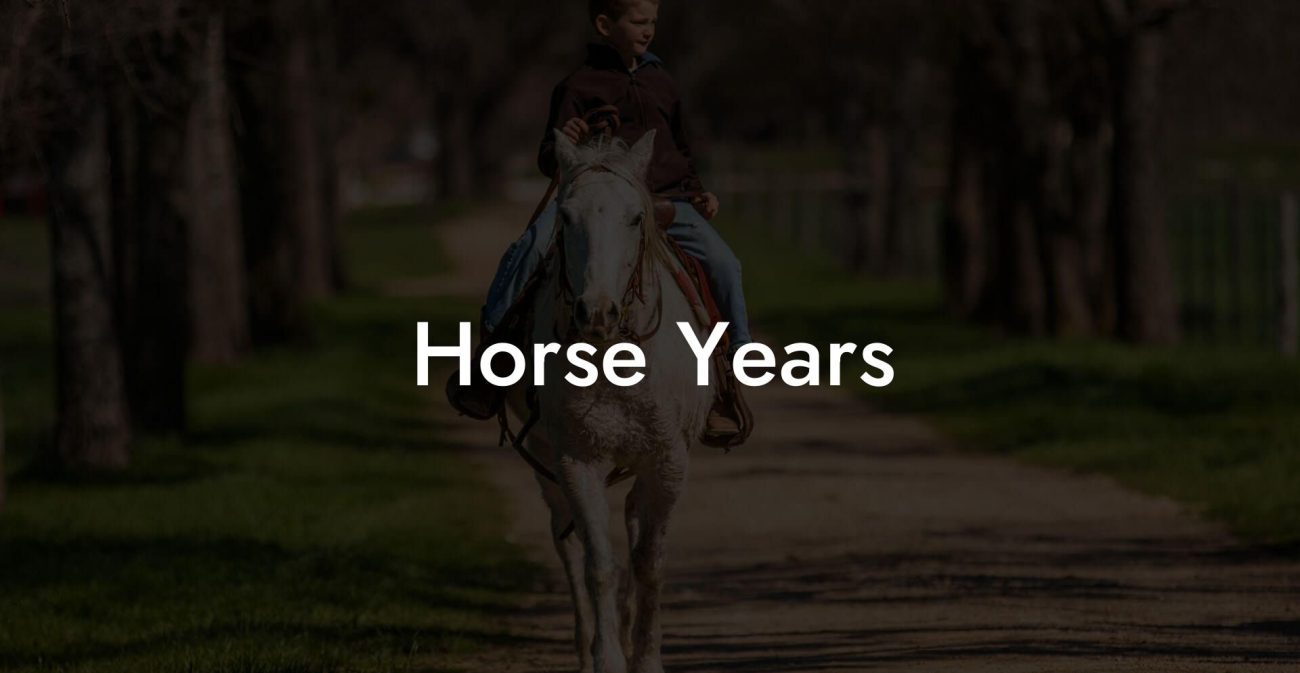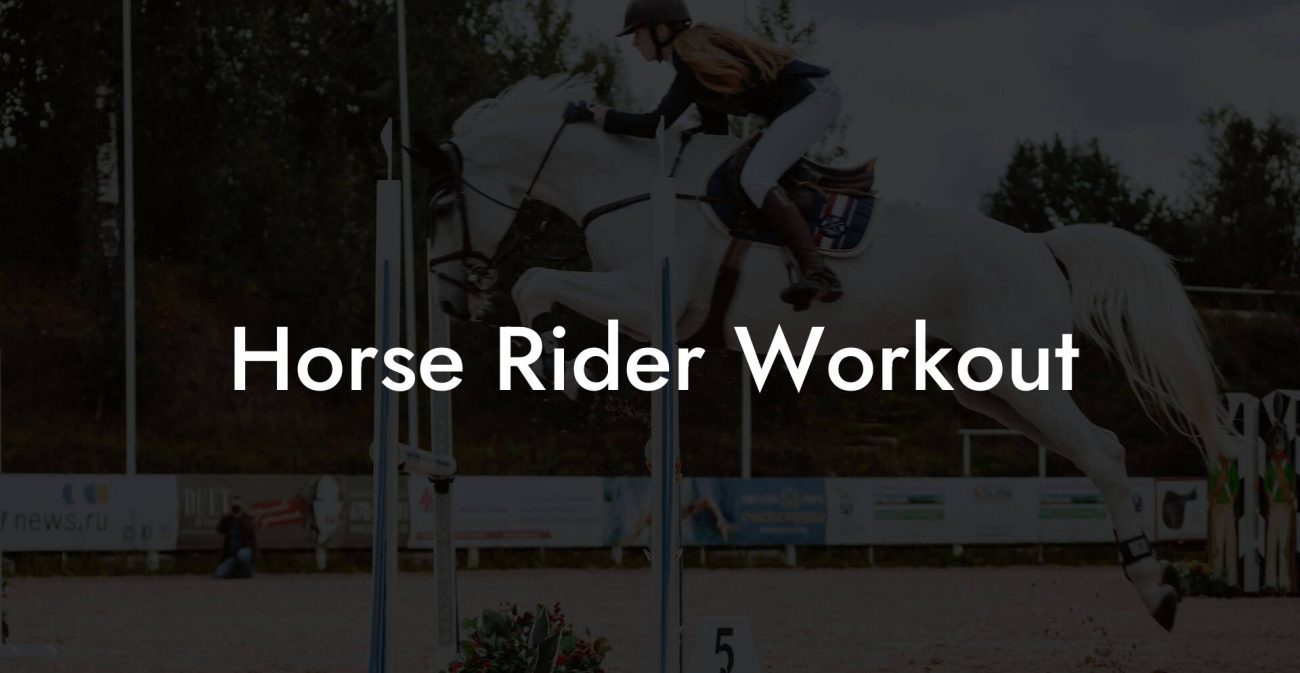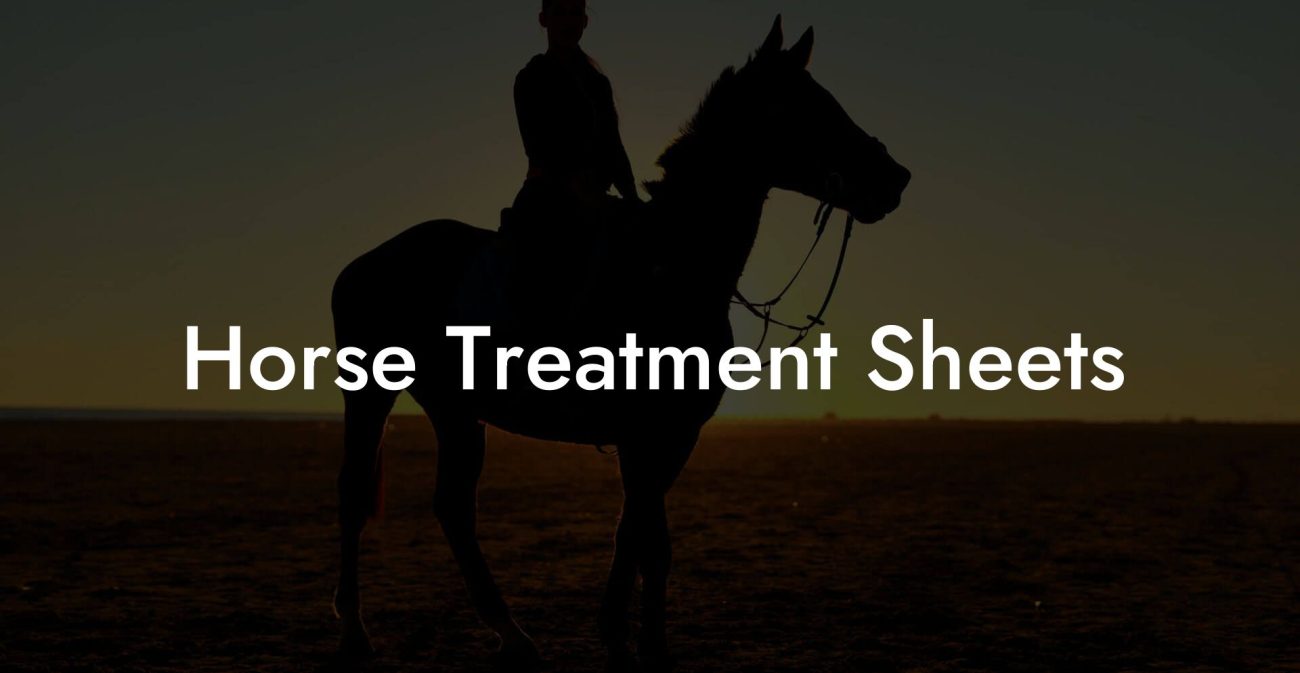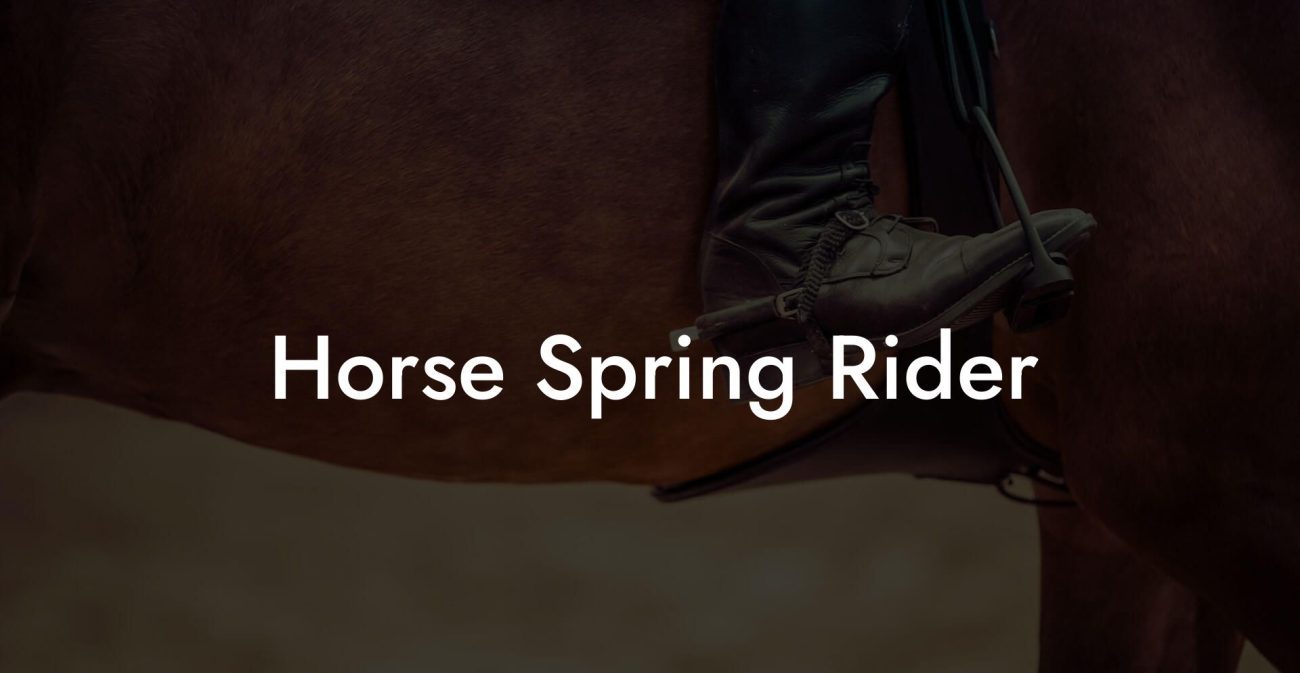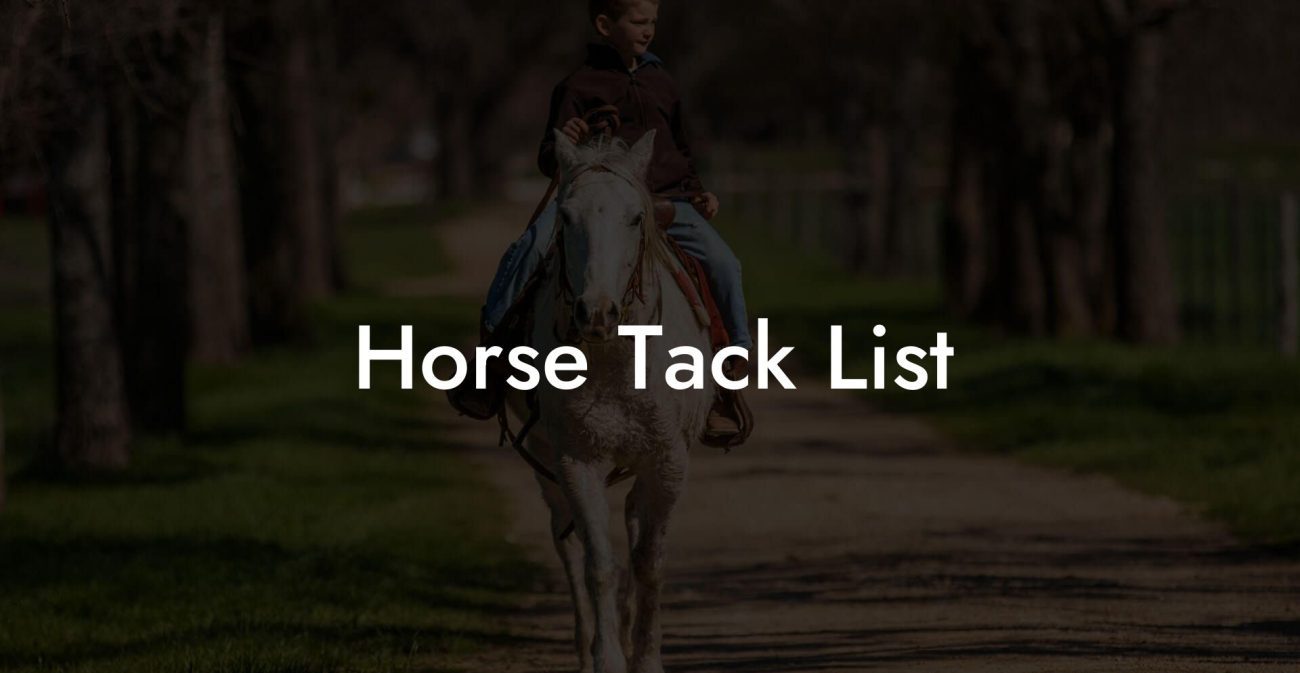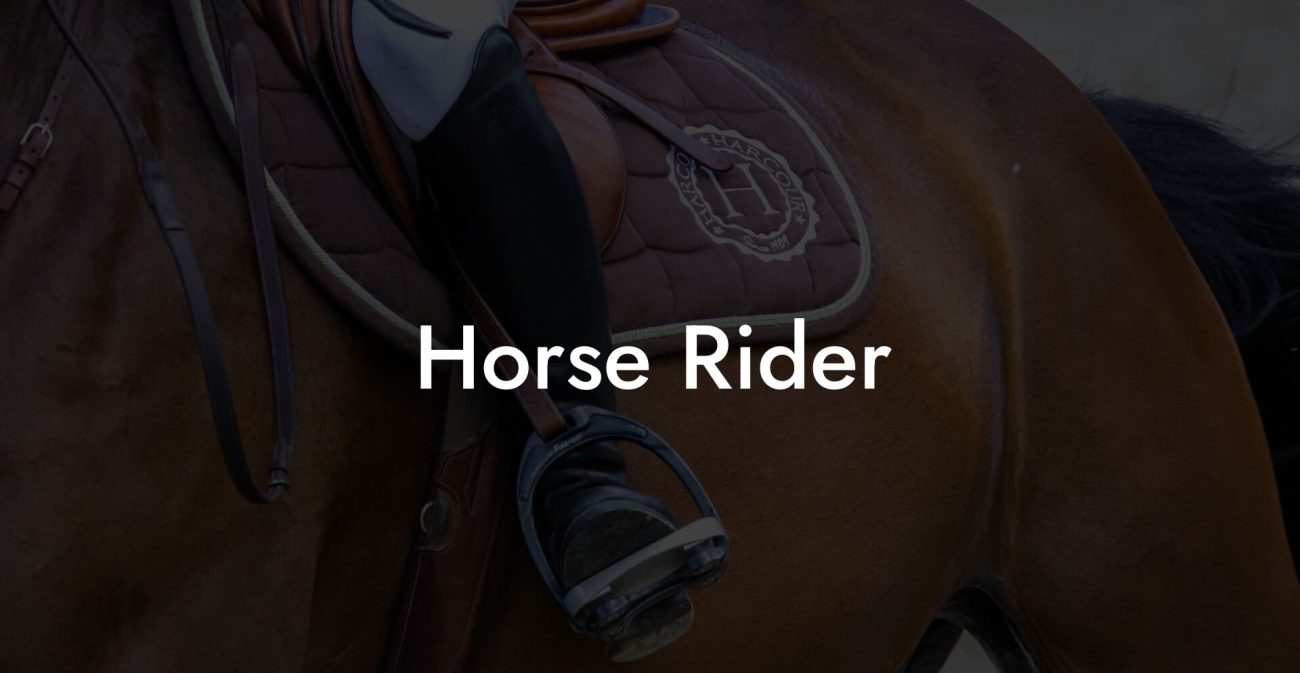Ever wondered how to lunge a horse without looking like you’re auditioning for a rodeo gone wrong? Lungeing, sometimes affectionately dubbed "circle time" for your equine buddy, is an essential skill for every budding horse enthusiast. Whether you're a Gen-Z equine influencer in the making or a millennial looking to add a new adventure to your horse care repertoire, this guide is here to break down the art and science of lungeing a horse for beginners in a fun, approachable, and yes, even a little humorous way.
Quick Links to Useful Sections
- What Is Lungeing and Why Is It a Game-Changer for Horse Care?
- Essential equipment: What You Need to Lunge Your Horse Like a Pro
- Lunge Line
- Lunge Whip
- Protective Equipment for You
- Ground Poles and Cones
- Stable or Arena
- Step-by-Step Guide to Lungeing Your Horse: From First-Timer to Confident Trainer
- Step 1: Establish a Calm Environment
- Step 2: Assemble Your Gear
- Step 3: The Initial Connection
- Step 4: Start with a Warm-Up
- Step 5: Begin the Lunge
- Step 6: Introduce Variations
- Step 7: Cool Down and Reward
- Understanding Your Horse’s Body Language: The Secret Sauce of Effective Lungeing
- Common Mistakes Beginners Make (and How to Dodge Them Like a Pro)
- Tips and Tricks for a Stellar Lungeing Session
- Advanced Lungeing Techniques: Leveling Up When You and Your Horse Are Ready for More
- Changing Gaits with Precision
- Incorporating Lateral Movements
- Using Obstacles to Boost Agility
- Lungeing and Horse Behavioral Basics: Tuning Into Your Equine Partner
- Resources and Community Support: Your Next Steps on the Lungeing Journey
- Frequently Asked Questions About Lungeing Your Horse For Beginners
- Your Journey to Empowered, Confident Horse Lungeing
- Making Lungeing a Part of Your Daily Horse Care Routine
- Embrace the Adventure of Lungeing: A Journey of Learning and Laughs
- Exploring the Evolution of Lungeing Techniques: A Blend of Tradition and Innovation
- Creating Your Personalized Lungeing Plan
- Start with a Thorough Observation
- Define Your Goals
- Mix and Match Techniques
- Regular Reviews and Adjustments
- Embodying the Equine Lifestyle: Beyond Lungeing
- Embracing a Passion for Horse Care in the Digital Age
- Your Path Forward: Empowerment, Learning, and Equine Joy
What Is Lungeing and Why Is It a Game-Changer for Horse Care?
Lungeing (or lunging) is essentially a long line workout for your horse. Think of it as giving your majestic friend a chance to stretch those powerful muscles without the stress of riding. It’s a fundamental training technique, ideal for warming up before a ride, checking on your horse’s responsiveness to commands, or simply letting your horse get some good old-fashioned exercise.
Used by trainers and enthusiasts alike, lungeing helps develop balance and coordination, strengthens the horse’s muscles, and even improves mental focus by teaching them to respect your commands from the ground. Whether you're prepping for a competitive show or just maintaining your horse’s health, mastering this technique will earn you serious cred in the stable.
And hey, if you think “lungeing” sounds fancy, welcome to the club! In equestrian circles, it’s as much about bonding with your equine companion as it is about healthy exercise. When done correctly, both you and your horse get to enjoy a workout that’s worth every minute, minus any awkward rodeo antics.
Essential equipment: What You Need to Lunge Your Horse Like a Pro
Before jumping (or lungeing) into action, let’s round up your toolkit. The right gear makes all the difference between a smooth session and an equine escapade gone haywire.
Lunge Line
The lunge line, sometimes called a lunge rein, is a long rope or strap used to guide your horse around a circle. Ideally 25 to 30 feet long, it lets you maintain a safe distance while still communicating with your horse.
Lunge Whip
A lunge whip isn’t a weapon, it’s a communication tool. With a few well-timed flicks or gentle taps, it helps you signal commands and reinforce boundaries. Choose one that’s light and easy to handle; your horse doesn’t need a beating, just a little direction!
Protective Equipment for You
Even though you’re not riding, safety first! Wear sturdy boots with good grip, comfortable gloves to protect your hands from rope burns, and always have a helmet handy if you’re working around active horses. Trust us, nothing says “I’ve got my life together” like being properly geared up.
Ground Poles and Cones
Adding ground poles or cones to your lungeing routine not only spices things up but also challenges your horse’s balance and agility. They’re great for creating mini obstacle courses, making training sessions both fun and functional.
Stable or Arena
Choose an area that is safe and spacious. An arena with a soft footing or a quiet pasture free from distractions is perfect for beginners. Look for a spot that offers plenty of room for your horse to move in a full circle.
Step-by-Step Guide to Lungeing Your Horse: From First-Timer to Confident Trainer
Ready to get started? Follow this step-by-step guide to transform you and your horse into a dynamic duo on the lunge line.
Step 1: Establish a Calm Environment
The first order of business is setting up a space where your horse feels safe and unhurried. Clear the area of obstacles, and make sure the atmosphere is as relaxed as your favorite Sunday morning playlist. A quiet, flat space helps your horse focus on you and the new activity.
Step 2: Assemble Your Gear
Check your lunge line, whip, and any additional gear like cones or poles. Ensure the lunge line is free of knots or frays and double-check that your whip is within easy reach. This preparation is essential for a seamless session.
Step 3: The Initial Connection
Approach your horse calmly from the side and secure the lunge line to their halter. It’s like getting a new phone, handle it with care and practice. Give a few moments for your horse to tune into your presence, establishing trust and mutual respect.
Step 4: Start with a Warm-Up
Just like any good workout, warming up is a must. Lead your horse into a gentle walk, either on a loose rein or by inviting them into a small circle. Allow them to settle into a rhythm, this is essential to prevent any sudden, jarring movements later.
Step 5: Begin the Lunge
Step back slowly, holding the lunge line securely. Stand at a safe distance and give the command for your horse to start walking in a circle around you. Keep your tone friendly but firm, consistency here is key. As you practice, your horse will start to respond more clearly to verbal cues or little taps with the lunge whip.
Step 6: Introduce Variations
Once your horse has mastered a basic circle, it’s time to introduce variations. This can mean increasing speed from a walk to a trot or even a canter, if your horse is comfortable with it. You can also experiment with changing directions or incorporating simple patterns with ground poles. This variety not only keeps your horse engaged but also builds its overall agility and strength.
Step 7: Cool Down and Reward
As the session winds down, guide your horse back into a slow, relaxed walk. Let them cool down while you offer plenty of praise or a treat as a reward. Positive reinforcement goes a long way in building trust and making your next session even better.
Remember, every horse is unique. Patience is crucial, the goal is consistency and fun. If your horse seems fidgety or distracted, consider shortening the session or revisiting simpler exercises until they build more confidence.
Understanding Your Horse’s Body Language: The Secret Sauce of Effective Lungeing
Horses communicate primarily through body language, and paying close attention can help you know when your horse is ready for something new or when it’s time to pull back. The way your horse holds its head, shifts its weight, or flicks its ears provides essential cues.
For instance, an alert and forward-focused horse typically indicates readiness and confidence, while a lowered head or a pinned-back ear might suggest discomfort or hesitation. By learning these signals, you'll be better positioned to adapt your lungeing technique, ensuring that each session is tailored to your horse’s comfort and progress.
It’s like reading a text from your best friend, if you know their style, you can pick up on the subtle cues they drop. Translating these nuances into actionable adjustments during lungeing can be a game-changer for long-term training success.
Common Mistakes Beginners Make (and How to Dodge Them Like a Pro)
Even seasoned equestrians have had their share of missteps. Here are some common pitfalls to avoid while lungeing:
- Over-Tightening the Lunge Line: A lunge line that’s too taut can create tension and anxiety for your horse. Keep it relaxed and allow enough slack for natural movement.
- Inconsistent Commands: Horses thrive on consistency. Use the same phrases and gestures every time you give a command. Mixed signals can confuse your horse and disrupt the flow of your session.
- Ignoring Warm-Up and Cool Down: Skipping these essential steps can lead to stiff muscles or even injury. Always invest time in properly preparing and winding down your horse’s muscles.
- Overloading with New Techniques: It’s tempting to throw in every fancy technique you’ve read about, but this can overwhelm your horse. Introduce new challenges gradually.
- Failing to Read Body Language: Not tuning in to your horse’s nonverbal cues can lead to missed opportunities for corrections or adjustments. Develop the habit of regularly checking in on your horse’s demeanor throughout the session.
By avoiding these common errors, you ensure smoother training sessions and a happier, more responsive horse.
Tips and Tricks for a Stellar Lungeing Session
Want your lungeing sessions to be as smooth as your favorite podcast episodes? Check out these practical tips:
- Keep Sessions Short and Sweet: Especially when starting out, limit sessions to 15–20 minutes to avoid fatigue or overexcitement.
- Use Verbal Cues Consistently: Pair your physical signals with clear verbal cues. This dual communication method accelerates learning and builds trust.
- Practice in a Familiar Environment: Beginners benefit from training in a space where your horse feels comfortable and relaxed. A familiar arena minimizes distractions and stress.
- Mix It Up: Once your horse is comfortable with the basics, throw in some variation. Change the direction, alter the pace, or set up a simple obstacle course to keep it fun and engaging.
- Stay Calm and Confident: Horses can sense your energy. A calm, confident trainer creates a secure environment where your horse is more likely to follow your lead.
- Reward Often: Don’t forget to celebrate every small victory with a treat or a kind word. Positive reinforcement is the secret sauce to fostering a strong bond.
With these tips in your lungeing toolkit, you'll transform your training sessions into a fun, productive, and sometimes downright hilarious experience.
Advanced Lungeing Techniques: Leveling Up When You and Your Horse Are Ready for More
Once you and your horse have mastered the basics, it’s time to explore advanced lungeing techniques. These methods are designed for those moments when you’re feeling extra confident and ready to add some spice to your routine.
Changing Gaits with Precision
Transitioning smoothly between walk, trot, and canter during a lunge session can significantly improve your horse’s balance and responsiveness. Start with a clear verbal cue for each gait, and slowly increase the pace as your horse becomes more comfortable.
Incorporating Lateral Movements
Lateral movements such as leg yields, shoulder-ins, and haunches-ins introduce a new challenge. These exercises improve your horse’s suppleness and balance. Begin at a slow pace, ensuring that your horse maintains proper form, and gradually build up the complexity.
Using Obstacles to Boost Agility
Add cones, poles, or even ground markers to create mini obstacle courses during your lunge session. This not only challenges your horse’s movement coordination but also enhances their focus and agility. It’s like an equine obstacle course, fun, stimulating, and incredibly effective.
Remember, don’t rush these advanced techniques. Your horse’s safety and comfort should always come first. With gradual introduction and plenty of positive reinforcement, advanced lungeing can elevate your training sessions to a whole new level.
Lungeing and Horse Behavioral Basics: Tuning Into Your Equine Partner
At the heart of every successful lungeing session lies the relationship between you and your horse. Understanding their behavior and reacting appropriately to their body language is the key to unlocking a successful partnership.
Here are some behavioral insights that every beginner should know:
- Confidence vs. Fear: A confident horse will usually have its head held high and ears pricked forward. Conversely, a fearful or anxious horse might lower its head or display tension. Adjust your training pace accordingly.
- Signs of Fatigue: Excessive yawning, drooping ears, or slower responses may indicate that your horse is tired. Respect these signals by allowing extra rest or shortening the session.
- Distraction Indicators: If your horse’s attention drifts or it starts wandering, it might be time to refocus or change up the routine. Keep sessions dynamic and adjust the environment as needed.
- Positive Feedback: A relaxed, steady gait and a light, responsive step are tell-tale signs that your horse is enjoying the session, and that means you’re doing something right!
By tuning into your horse’s cues, you create an atmosphere of mutual respect where training becomes an enjoyable exchange, a conversation without words that builds confidence and trust.
Resources and Community Support: Your Next Steps on the Lungeing Journey
Just like any good hobby, horse care and lungeing are even more fun when you’re part of a community. Whether you’re following online tutorials, engaging with equestrian influencers, or joining local horse clubs, community support can help you stay motivated and informed.
Here are a few resources to boost your lungeing skills and build connections:
- Online Equine Forums and Facebook Groups: Connect with fellow horse enthusiasts who can offer advice, share success stories, and troubleshoot challenges in real-time.
- YouTube Tutorials: Visual learners will appreciate step-by-step videos on lunge training. Channels dedicated to beginner horse care can offer valuable insights.
- Local Equestrian Centers: Many stables and riding schools offer lungeing clinics and workshops. Check out your local centers to see if they offer group classes designed for beginners.
- Veterinary Advice and Equine Specialists: When in doubt, consult professionals who can provide personalized advice tailored to your horse’s specific needs.
- Equestrian Blogs and Podcasts: Stay updated with the latest trends in horse training and care by following blogs or listening to podcasts that focus on holistic and integrative approaches.
Leverage these resources to provide a well-rounded lungeing experience. Remember, the journey is as rewarding as the destination, and every bit of shared knowledge gets you one step closer to becoming a lungeing superstar.
Frequently Asked Questions About Lungeing Your Horse For Beginners
Below are some FAQs that address common questions and concerns about lungeing, ensuring that you have all the answers you need to train your horse with confidence.
1. What exactly is the purpose of lungeing my horse?
Lungeing is a training method that allows your horse to work on balance, strength, and responsiveness while exercising in a controlled environment. It’s also an excellent warm-up and cool-down routine.
2. How long should I lunge my horse each session?
For beginners, sessions should typically last between 15 to 20 minutes. Over time, as your horse builds stamina and focus, you can gradually extend the duration.
3. Can I lunge my horse if I’m not a professional trainer?
Absolutely! Lungeing is a beginner-friendly practice that is widely recommended to horse owners of all experience levels. Just remember to start slowly and always prioritize safety.
4. What are the common mistakes to avoid when lungeing a horse?
The most frequent errors include over-tightening the lunge line, inconsistent commands, neglecting proper warm-up and cool down, and failing to read your horse’s body language. Avoid these pitfalls for a smoother training session.
5. Is a lunge whip necessary for effective training?
While not absolutely mandatory, a lunge whip is a useful tool for communicating commands. Ensure you use it gently, it’s all about guidance, not force.
6. How can I tell if my horse is enjoying the lungeing session?
Look for relaxed body language, responsive movements, and a willingness to engage. A happy, engaged horse typically shows a steady gait and calm energy.
7. Can lungeing help with my horse’s behavioral issues?
Yes, when done correctly, lungeing can improve your horse’s focus and help channel excess energy, potentially alleviating behavioral issues. However, if problems persist, consult a professional.
8. What safety precautions should I always follow?
Always use the proper gear, ensure your training area is free of hazards, monitor your horse’s body language, and never leave your horse unattended while lungeing.
Your Journey to Empowered, Confident Horse Lungeing
Embarking on your lungeing adventure isn’t just about improving your horse’s fitness, it’s about forging a deeper connection with your equine partner. With each circular session, you both learn a little more about trust, discipline, and the art of moving as one.
Imagine the satisfaction when your horse responds intuitively to your cues, the subtle shift in their posture, the gentle speed changes, and that spark of recognition in their eyes. These are the moments that make all the effort worthwhile, blending technical skill with an authentic bond.
From mastering the basics to experimenting with advanced techniques, every step forward is a milestone. Embrace the process, celebrate the small victories (and the occasional misstep), and share your journey with a supportive community of fellow horse enthusiasts.
In the world of horse care, confidence and consistency are your best allies. By integrating structured training, rich communication, and a dash of creativity, you’re well on your way to becoming a true lungeing maestro. So grab your lunge line, rally your favorite tunes, and dive in, your horse, and your future self, will thank you.
Making Lungeing a Part of Your Daily Horse Care Routine
Consistency is the secret ingredient in all great training routines, and lungeing is no exception. Incorporating regular lungeing sessions into your day-to-day horse care routine not only maintains physical fitness but also strengthens the communication channel between you and your horse.
Start small: designate a specific time each day or several times a week for your lungeing practice. Even on busy days, a brief 15-minute session can set the tone for a calm, focused, and happy horse. Over time, these sessions help reinforce your horse’s responsiveness to cues and improve their overall training.
Consider tracking your progress through a training journal or a mobile app designed for equine enthusiasts. Documenting your sessions, what worked, what didn’t, and how your horse reacted, can provide valuable insights and help you tailor future sessions for even better results.
And don’t forget to mix in some fun. Experiment with new patterns, introduce playful variations, and occasionally let your hair down (mentally, if not physically) for a relaxed session that breaks the monotony of routine. After all, a happy trainer equals a happy horse.
Embrace the Adventure of Lungeing: A Journey of Learning and Laughs
Lungeing isn’t just another check off your equestrian to-do list, it’s an adventure brimming with shared laughs, occasional mishaps, and ultimately, a blossoming partnership between you and your horse. Think of every session as a mini-adventure where the goal isn’t perfection, but progress and mutual understanding.
Some days, your horse might be all in, eager, engaged, and moving like a pro. Other days, they might decide that a leisurely walk in circles is their idea of a vacation. Embrace these moments with humor and patience. Learning the rhythm of your horse can be as challenging as it is rewarding.
With a blend of persistence, empathy, and plenty of positive reinforcement, you’ll soon find that lungeing becomes a fun, enriching part of your overall horse care strategy. The more you practice, the more you and your horse will develop a unique, unspoken language of trust.
So, gear up, step back, and enjoy the ride, even if you’re not mounted, the empowerment that comes from mastering lungeing will make you a confident and capable caretaker for your equine friend.
Exploring the Evolution of Lungeing Techniques: A Blend of Tradition and Innovation
While lungeing has been a trusted technique for decades, modern horse care has added some innovative twists to this time-honored practice. Today’s lungeing methods combine traditional fundamentals with contemporary training aids and techniques that suit the pace of modern life.
For example, many trainers now integrate smartphone apps and wearable tech that monitor a horse’s performance, tracking metrics like heart rate and stride consistency. This data-driven approach allows you to make informed adjustments to your sessions, optimizing results and ensuring your horse is always getting the best care.
With social media connecting equine enthusiasts across the globe, you have a wealth of shared experiences and tips at your fingertips. Embrace the digital age by joining online workshops, virtual training sessions, and forums where innovation meets tradition. Blending the old and the new keeps your technique fresh, effective, and, most of all, fun.
As you continue your journey, remain open to both time-tested methods and modern tools. Together, they empower you to refine your lungeing sessions, making them a vibrant tapestry of learning, laughter, and consistent progress.
Creating Your Personalized Lungeing Plan
Just like any other aspect of horse care, personalization is key. Every horse is unique, varying in temperament, physical condition, and learning speed. Your lungeing plan should reflect these differences.
Start with a Thorough Observation
Before setting in stone a training plan, spend some time observing your horse’s natural gait, behavior, and response to various stimuli. Use these insights to determine the optimal pace and style of lungeing that best suits their personality and physical capabilities.
Define Your Goals
Whether your aim is to improve your horse’s balance, enhance muscle tone, or simply enjoy a meditative exercise session, clarify your objectives from the start. Having clear, achievable goals will help shape your sessions and provide milestones to celebrate along the way.
Mix and Match Techniques
Craft a balanced regimen that includes basic circular lungeing, intermittent gait changes, and advanced lateral movements for variety. Keep a flexible schedule that allows for periodic adjustments based on your horse’s feedback.
Regular Reviews and Adjustments
Training is a dynamic process. Maintain a journal to record each session, noting any breakthroughs or challenges. Regularly review this log with a trainer or an experienced friend to calibrate your approach. Over time, this iterative process ensures that your personalized plan evolves with your progress and your horse’s changing needs.
By the time you’ve honed your plan, you and your horse will have developed a shared language of trust, communication, and mutual improvement, a true testament to the power of personalized equine care.
Embodying the Equine Lifestyle: Beyond Lungeing
Lungeing is more than just a training tool, it’s a stepping stone into a holistic equine care lifestyle. Learning to lunge your horse opens the door to a broader understanding of horse behavior, fitness, and well-being.
As you progress, consider exploring complementary disciplines such as groundwork, natural horsemanship, and even equine massage. These additional practices enhance your overall approach, ensuring that every aspect of your horse’s physical and mental health is well cared for.
Integrating lungeing into a wider lifestyle of active horse care helps you build a comprehensive training portfolio, one that’s as engaging as it is effective. And with every new skill you acquire, you strengthen the bond with your equine partner, turning every day into a shared adventure.
Embracing a Passion for Horse Care in the Digital Age
For many young enthusiasts, caring for a horse is not just about the physical act of training, it’s a lifestyle, a passion, and often a part of one’s identity. Thanks to digital media, you now have a world of information at your fingertips, from Instagram reels featuring quick lungeing tips to interactive webinars hosted by expert trainers.
Engage with online communities where you can share your successes, learn from the mistakes of others, and even showcase your horse’s progress on social media. The digital age has made equine care more accessible, setting the stage for a generation that values both tradition and innovation.
So whether you’re posting your first lungeing session or diving deep into advanced techniques, remember that you are part of a vibrant, modern community that celebrates the art of horse care with creativity, humor, and boundless passion.
Your Path Forward: Empowerment, Learning, and Equine Joy
Lungeing your horse is more than just a training exercise, it’s a journey toward empowerment, learning, and mutual joy. As you practice, you’ll not only sharpen your training skills but also forge a deeper bond with your horse. Every session, every circle, is a step toward a more confident, communicative, and vibrant partnership.
Embrace the process with humor, patience, and above all, pride in your progress. From the first tentative circle to the confidently executed advanced maneuvers, each moment adds to your journey, a journey that transforms both you and your equine companion into a well-coordinated, unstoppable team.
So let your lungeing sessions be a celebration of horse care, a testament to your dedication, and a fun, ongoing adventure. Tap into the collective wisdom of seasoned trainers and the supportive vibe of the online community, and before you know it, you’ll be a pro at lungeing, enjoying every moment along the way.

